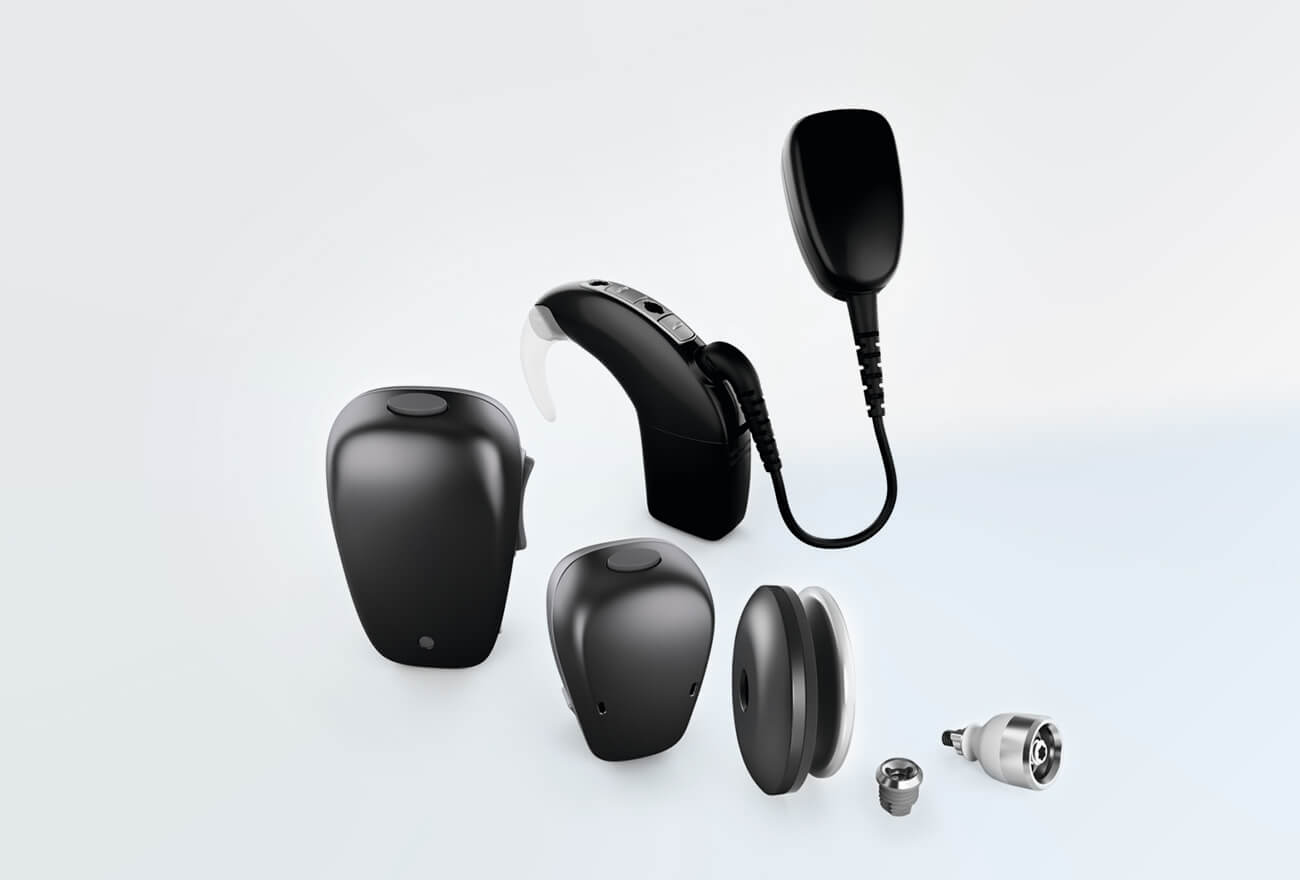Implantable hearing aids
Hearing impaired patients who are not adequately treated by a hearing-improving surgery or a conventional hearing aid can often be treated with an implantable hearing aid. Here, bone conduction implants must be distinguished from active middle ear implants.
Bone Conduction Implants
Hearing works by transmitting sound through the ear canal and the middle ear to the inner ear (air conduction). A disturbance of this transmission is called conductive hearing loss. However, sound is also transmitted directly via the bone to the inner ear (bone conduction). Bone-anchored hearing aids use this route by coupling directly to the skull bone, which means that the sound waves are transmitted directly via the bone to the inner ear. Bone conduction hearing aids are suitable for patients with conductive hearing loss and only a maximum of moderate restriction of the inner ear. These include in particular patients with a missing ear canal (atresia), with chronic ear canal inflammation and patients who have undergone surgery on the middle ear and in whom no improvement in hearing has been achieved. The implants are usually inserted under general anesthesia during surgery.
Basically two different systems can be distinguished:
Transcutaneous (BAHA® attract, BONEBRIDGE)
The implant is implanted under the intact skin and the audio processor is magnetically attached to it.
Percutaneous (BAHA® connect, Ponto™)
The implant protrudes minimally through the skin and the audio processor is attached to it.
Active middle ear implants
An implantable active middle ear implant is suitable for patients with up to profound combined hearing loss and sensorineural hearing loss where conventional hearing aids cannot be used (e.g. allergies to hearing aid materials or missing ear canal). Here, sound is transmitted directly to the middle ear via a vibration generator and, unlike bone conduction implants, the opposite ear is not stimulated.
An implanted active middle ear implant is the Vibrant Soundbridge®. The implant is inserted under the skin through an access behind the ear by a surgical procedure under general anesthesia. The tiny transmitter can be coupled to different parts of the ossicular chain. The externally worn audio processor is held magnetically to the head and controls the implant by induction. The transmitter in the implant finally converts the signal into vibrations and thus stimulates the middle ear.
The Carina® system is also an active middle ear implant. This is a fully implantable system, so no external device (audio processor) is required. The microphone, processor and transducer are inserted under the skin. The microphone sends the signal to the processor, and the electrical signal is then converted into mechanical vibrations and transmitted to the ossicles. The battery is charged by an external charger.









